Currently Empty: € 0,00
Precious guides
- Home
- Precious guides
GUIDE TO DIAMONDS
Diamonds
Diamonds are minerals composed of crystallized carbon, formed under specific geothermal conditions millions of years ago deep within the Earth’s mantle. Intense pressure, at approximately 150-200 kilometers deep, and temperatures exceeding 1200 degrees allowed carbon to crystallize into diamonds. Through volcanic eruptions, rough crystals reached the Earth’s surface and, to this day, represent the hardest known natural material. “Adamas,” the Greek term from which “diamond” derives, literally means “unbreakable” or “indestructible”.
The 4 C's of Diamonds
The quality and value of a diamond are classified according to four criteria, also known as the 4 Cs of diamonds, from the English terms Carat, Cut, Clarity, and Color. These internal and external properties are evaluated by diamond experts and described in a document called a diamond certificate, which officially demonstrates the quality and value of the stone or the jewelry in which it is set. The GIA (Gemological Institute of America) is a non-profit organization in the field of gemology and is the most well-known and authoritative diamond certification organization worldwide.
Carat
1 carat is equivalent to one-fifth of a gram (0.2 g) and is the unit of weight used to measure a diamond. A diamond weighing 1 carat is equivalent to 100 points. The common abbreviation used for carat is “Ct.”
0,20 Ct
3.80mm
0,30 Ct
4.2mm
0,50 Ct
5.1mm
0,90 Ct
6.20mm
1,25 Ct
7.0mm
1,75 Ct
7.8mm
2,50 Ct
8.80mm
4,00 Ct
10.4mm
Cut
Diamond cut is evaluated according to 4 values:
Excellent: when diamonds optimally reflect light, resulting in brilliance. These diamonds are quite rare.
Very Good: diamonds in this category also have a high cut grade and reflect light well.
Good: diamonds in this category are slightly less brilliant and lively but are of good quality.
Fair: In this case, diamonds reflect less light and are less brilliant.
Round
Asscher
Emerald
Oval
Marquise
Pear
Radiant
Princess
Heart
Clarity
The diamond clarity scale consists of six main values, ranging from FL-IF to I2-I3, taking into account the clarity of the diamond both internally and on the surface, as well as the presence or absence of any visible flaws under magnification and/or with the naked eye.
FL
Flawless
IF
Internally Flawless
VVS1 / VVS2
Very Very
Slightly Included
VS1 / VS2
Very Slightly
Included
SI1 / SI2
Slightly
Included
I1 / I2 / I3
Inclusion
Color
The color of colorless diamonds is evaluated using alphabet letters from D to J, considering the presence or absence of a white or yellow tint. The higher the transparency, the higher the value: those from D to F are rarer and almost always used for high jewelry. From G to J, the tint increases, and from K to Z, we refer to colored diamonds, meaning light yellow in color.
D
E
F
G
H
I
J
Black Diamonds
Natural black diamonds are classified as precious gemstones; unlike most diamonds, they are completely opaque. Stones of extraordinary beauty, they are considered very valuable, although more affordable compared to other colored diamonds. The black diamond is a stone with non-universal symbolism: while in some countries, such as India, it is not well-regarded, in Italy, it is considered the stone of reconciliation.
Let’s look at the characteristics of black diamonds according to the criteria of the 4Cs.
Carat
Like other diamonds and gemstones, black diamonds are measured in carats. Naturally extracted ones are expensive but still less costly than those of another color.
Cut
Naturally extracted black diamonds appear very rough and must be shaped through a processing method called cutting or polishing.
Clarity
Clarity is not a particularly indicative evaluation criterion for black diamonds because clarity indicates the number of defects or inclusions present in the diamonds, and black diamonds do not refract light as much as other diamonds.
Color
Color is the only evaluation criterion for black diamonds, assessed solely based on intensity. The color is caused by the presence of graphite formed in the diamond’s crystalline structure during its formation.
Colored Diamonds
Color is definitely the characteristic that makes a colored diamond rare and precious, and even a slight hue can have a significant impact on the value of the stone. The most well-known colored diamonds are pink, blue, and green diamonds; the rarest ones are red, green, and blue diamonds with medium-dark tones, combined with moderate saturation.
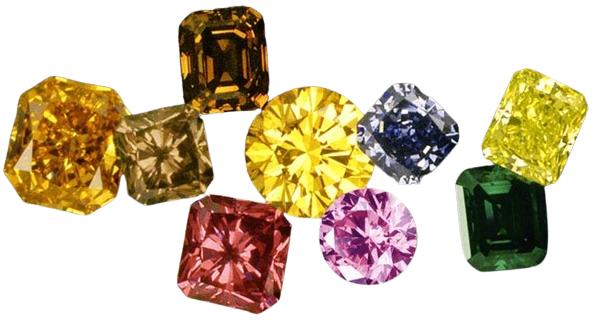
The characteristics used to evaluate and classify colored diamonds are Color, Setting and Cut, Shape, and Clarity.
Color
When purchasing a colored diamond, the most important factors to consider are brilliance, depth, and color intensity: the more intense the color, the more precious the diamond will be.
Cut and setting
Cut and setting of the stone are two other important characteristics to evaluate a colored diamond. The cut because the higher its quality, the more the color will be enhanced when exposed to light sources. Also, the setting of a piece of jewelry with colored diamonds must be carefully examined and selected by an expert. Finally, the synergy of colors with metals and materials: yellow diamonds will look better in combination with yellow gold, while red diamonds with rose gold.
Shape and Clarity
When purchasing a colored diamond, the most important factors to consider are brilliance, depth, and color intensity: the more intense the color, the more precious the diamond will be.
GUIDE TO RUBY
Gems
Gems are mostly minerals, characterized by a crystalline structure and ornamental value. The distinction between precious and semi-precious gems is purely commercial, and it is through this classification that diamonds, rubies, sapphires, and emeralds are considered precious gems.
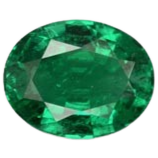
Emerald
The emerald owes its name to the Greek word “smaragdos,” which means “green gemstone,” and it is one of the 4 precious gemstones, along with diamonds, sapphires, and rubies. Today, these gemstones can be found mainly in Colombia, Zambia, Afghanistan, Australia, Austria, Brazil, Madagascar, Mozambique, Namibia, Nigeria, Norway, Pakistan, Russia, Somalia, South Africa, Spain, Switzerland, Tanzania, and the United States.
Emeralds have been highly regarded since ancient times: they were the favorites of Cleopatra, and they were associated with exceptional healing powers. Even today, they symbolize love and success. Emeralds also represent peace, fidelity, commitment, friendship, loyalty, and compassion, and they are one of the preferred choices for engagement rings.
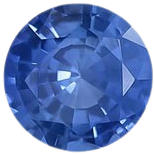
Sapphires
Blue is the color most commonly associated with sapphires (the name itself derives from the Latin “sapphirus,” meaning blue), although they exist in other shades as well. Among the 4 Cs used to classify gemstones (color, cut, clarity, and carats), color is the most important property of sapphires: the finest ones have a beautiful vivid color without any grayish undertones. Today, these precious stones are found in Sri Lanka, Vietnam, China, Thailand, Australia, the United States, Madagascar, and East Africa.
Sapphire is a symbol of commitment, fidelity, and pure love, which is why it is widely used as a stone for engagement rings: famous is the one worn by Kate Middleton, received from Prince William of England. Sapphires are considered stones that reduce anxiety and calm nerves, aid digestion, and provide energy.
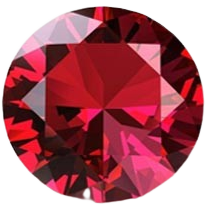
Ruby
Like other major gemstones, the ruby gets its name from its color (rubeus in Latin means red). Ruby, like sapphire, belongs to the corundum family; the most precious ones are those of “pigeon’s blood” color, a red so intense that it has no yellow or blue undertones. The places where rubies are found include Myanmar, Madagascar, Nepal, Pakistan, Tajikistan, Tanzania, Vietnam, and the United States.
Given its color, ruby is often chosen as a stone for engagement rings; it is a strong symbol of passion and love, traditionally given for the fifteenth and fortieth wedding anniversaries. Moreover, it is considered a stone of love and passion, aphrodisiac, providing energy and enthusiasm. Among its healing properties, it is said to lower fevers and improve blood circulation.
The 4 C's of Gems
Before the creation of a piece of jewelry, gemstones need to be cut and polished. Like diamonds, gemstones can also be classified according to the 4Cs: Color, Cut, Clarity, and Carat.
Color
The main factors that determine the color of a gemstone are hue, tone, and saturation.
Hue refers to the primary base color of the gemstone, one of those within the range of primary colors. Indicating the hue means saying that a stone is blue, red, green, or yellow. Tone, on the other hand, indicates the intensity of the color, how light or dark it is. What is considered most valuable is the neutral tone, but in this case, aesthetic factors, as well as the setting of the jewel, can also come into play. Saturation, finally, corresponds to the purity of the color: if the gemstones have excellent saturation, they contain few or sharp shades of brown or gray. The purer the color, the more precious the gemstone will be.
Cut
Just like diamonds, gemstones can be classified into 4 types of cuts: excellent, very good, good, and fair. The higher the quality of the cut, the greater the value of the stones: an excellent cut reflects on the quality of the gemstone, as it enhances the color and improves the overall visual appearance.
Clarity
The clarity of the gem refers to the color and clarity of the stone. The fewer impurities it has inside, the more precious the stone is. The clarity of the stone depends on its cleanliness and is classified as AAA in the case of very clean stones, while AA clarity refers to semi-clean stones.
Carat
The carat refers to the mass of the gemstone: this is because the density varies depending on the type of stone. For example, a diamond is less dense than a ruby, so a 1-carat diamond will be larger than a 1-carat ruby.
GUIDE TO PEARLS
Pearls
A pearl is a spherical structure composed of crystalline calcium carbonate (aragonite) produced by the mantle of mollusks (typically oysters) in response to the presence of foreign bodies that can damage the tissues. The term “pearl” derives from the Latin “pernula,” the name used to indicate the shell containing it.
Pearl Classification
Extensively used in jewelry, pearls are classified according to several criteria such as size, shape, luster, and color.
Pearl Size
The size of pearls is more important than their weight: expressed in millimeters, the larger their size, the higher the value of the pearls, especially beyond 8-9 mm.
Pearl Shape
Pearls come in round, oval, pear-shaped, or irregular shapes (known as “baroque” pearls). Symmetrical pearls are the most valuable, ranging in size from 2 mm to 16 mm in diameter, with the size depending on the type of mollusk in which they form.
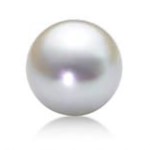
Round
The perfect spherical shape gives the pearl the maximum value
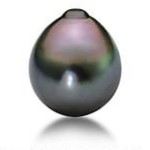
Drop
Teardrop shapes are usually symmetrical pearls with an oval or pear shape
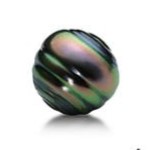
Circlé
This unique shape is the result of a natural phenomenon and is characterized by multiple circular rings
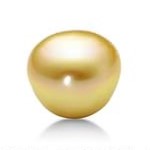
Button
It resembles a round pearl but has a flat side and a high dome
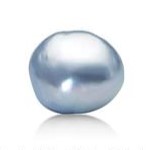
Baroque
An asymmetric pearl characterized by a rough and irregular surface
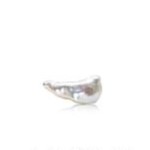
Keshi
Keshi pearls do not contain a nucleus and therefore appear in a variety of flake-like shapes
Luster of Pearls
Luster is the factor that makes pearls unique and sets them apart from other gemstones. Luster is due to light penetrating through the various layers of nacre and returning to the observer’s eye from the inner depths of the gem. The effect is that of a glow emanating from within, from the very heart of the pearl.
Pearls with a very thin layer appear dull and muted, as do those with layers produced too quickly.
The luster of pearls is grouped into four categories:
- Excellent (Brilliant): Reflections are bright, very sharp, and well-defined
- Good: Reflections are bright but slightly dulled at the edges
- Fair: Reflections are weak, blurred, and fuzzy
- Poor: Reflections are very indistinct and diffuse.
Color of Pearls
Pearls are available in various colors, ranging from white to black. The natural color usually results from a combination of different factors: the predominant base color, one or more colors that surpass the body color, and also the play of bright colors, such as a combination of colors like pink, green, blue, or even silver, which changes as the pearls are moved in hand.
Like other gemstones, the color of the pearl is formed by:
- Hue, which is the first perception of color;
- Tone, which is the greater or lesser brightness of the color itself;
- Saturation, representing its strength and intensity.
Pearls never achieve the strong saturation that other gemstones have, instead presenting a wide palette of delicate hues.
Taking into account the base color, in the GIA system, 19 pearl hues are recognized and classified as follows:
- Neutral: white, gray, and black;
- Nearly neutral: silver, cream, and brown;
- Tints: all other colors.






